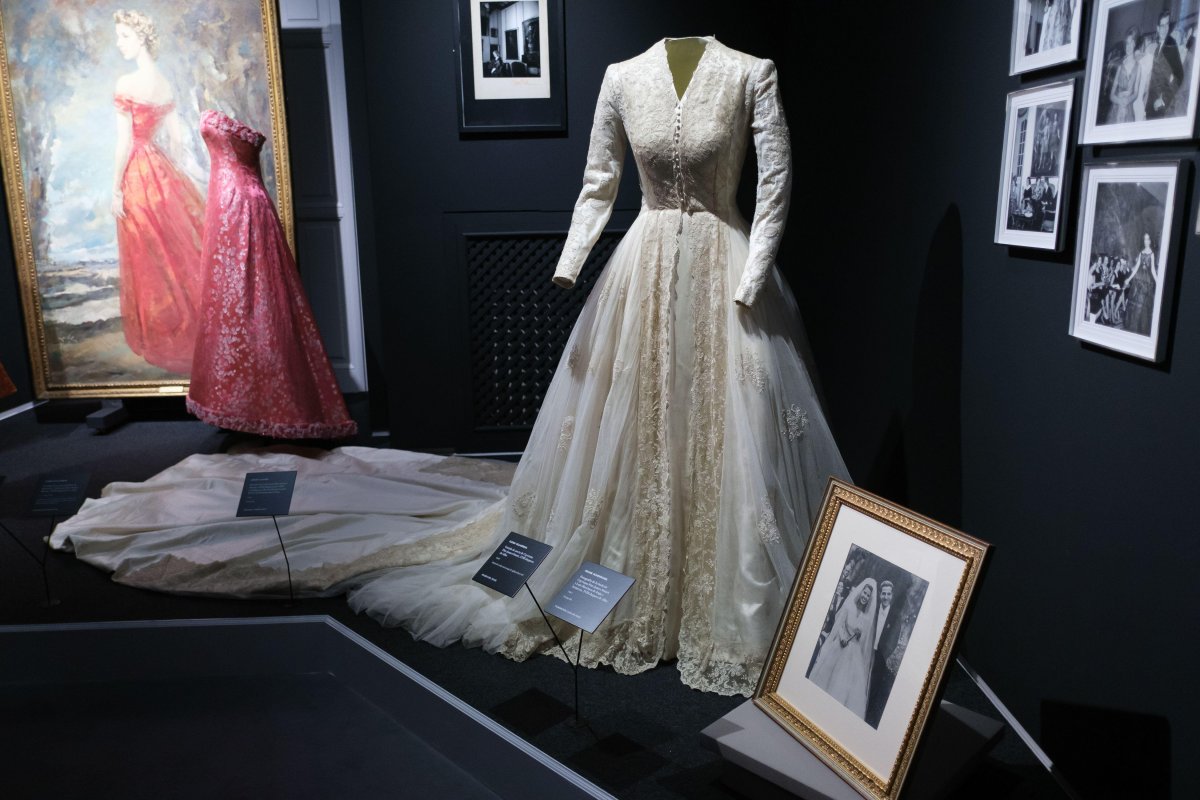
It’s Royal Wedding Wednesday once again here at The Court Jeweller, and today we’ve got a closer look at the beautiful gown and classic tiara worn by a Spanish aristocratic bride more than 75 years ago.
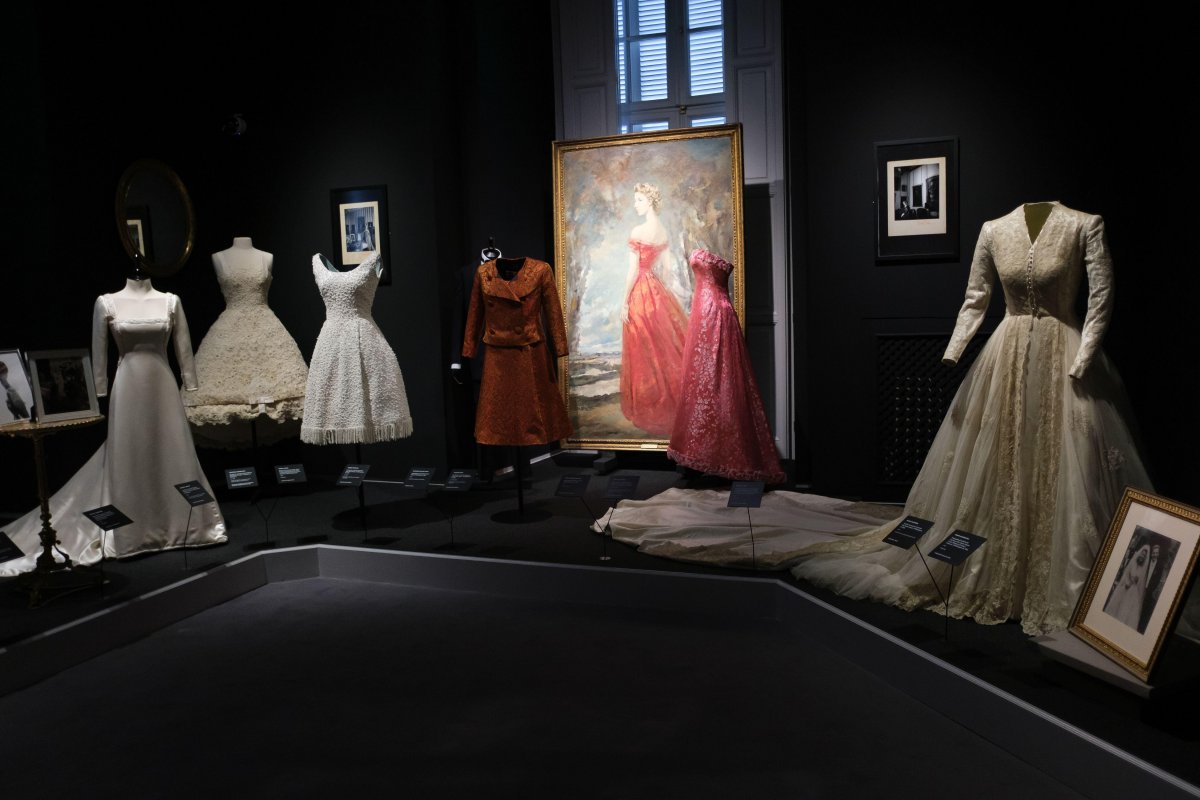
A new exhibition at the Palacio de Liria in Madrid showcases clothing from the archival collection of the Dukes of Alba, one of the most important noble families in Spain. “Fashion in the House of Alba” features important creations by haute couture designers, including Charles Frederick Worth and Cristóbal Balenciaga, paired with paintings by artists like Franz Xaver Winterhalter and Joaquin Sorolla.
The exhibition, which opened recently, seeks to showcase the dialogue between the two art forms, noting, “if painting is indebted to fashion, fashion owes its permanence over time to painting.” The display was curated by noted fashion and art curator Eloy Martínez de la Pera and the designer Lorenzo Caprile, who has made several memorable gowns for several members of the Spanish royal family, including Queen Letizia and Infanta Cristina.
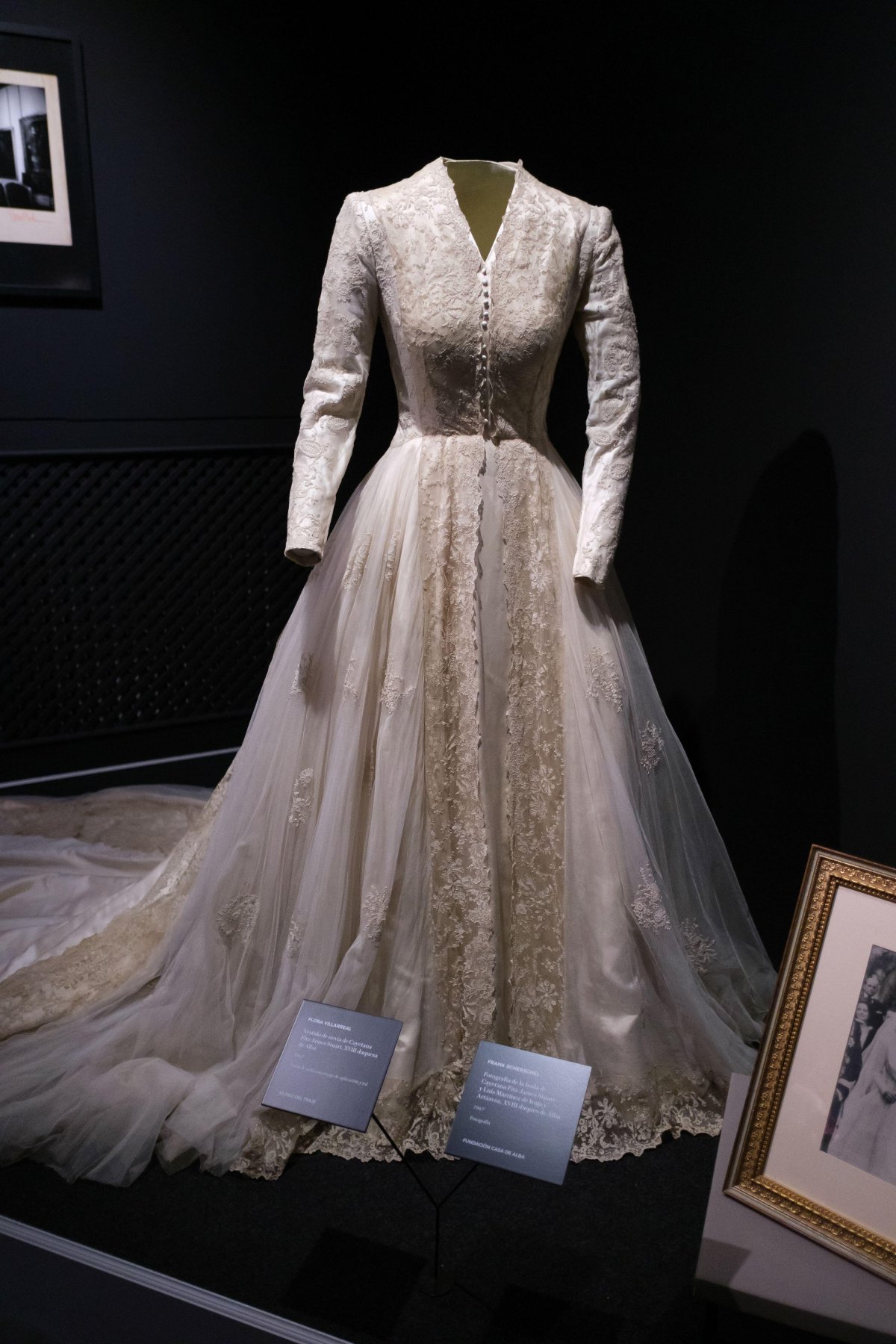
One of the most significant garments on display in the fashion exhibition is the elegant bridal gown worn by the 18th Duchess of Alba for her wedding in October 1947. The gown, made of ivory satin, lace, and tulle, was created by the Spanish designer Flora Villareal (1893-1977). Villareal was trained as a seamstress and later became one of the most sought-after designers by society women in Spain. She was a contemporary and friend of Balenciaga, with a workshop and showroom on the Paseo de la Castellana in Madrid.
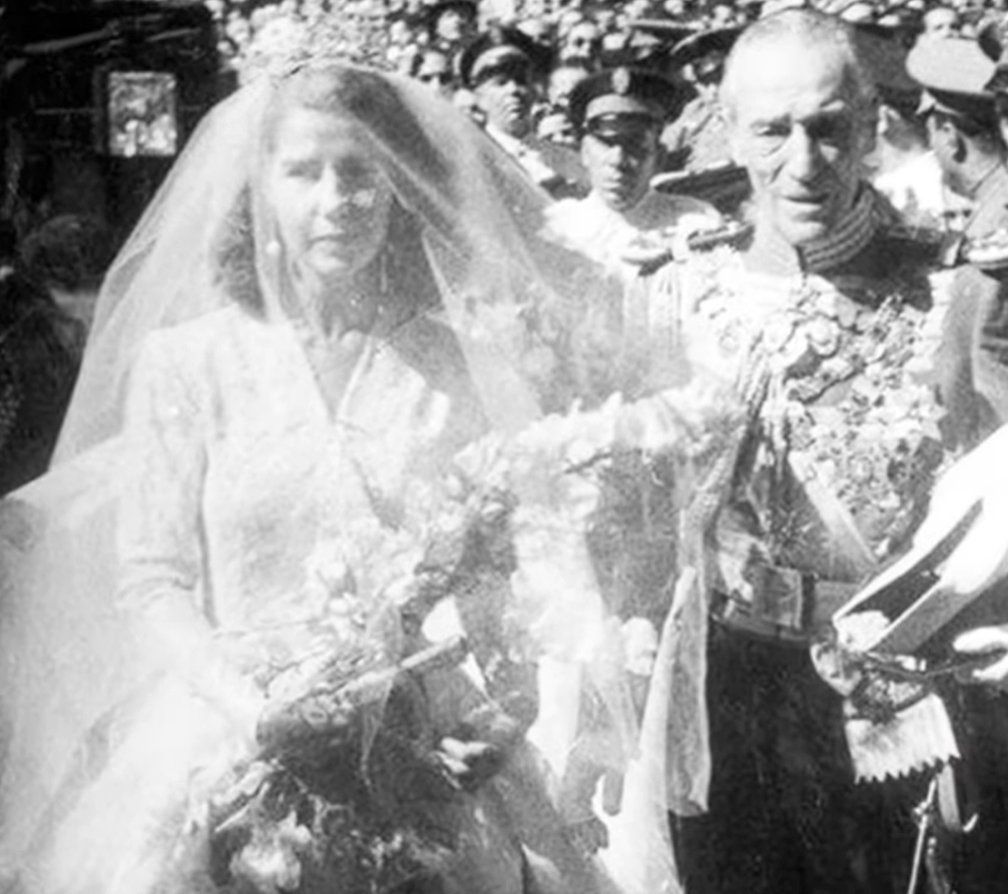
The wedding gown that Villareal created was worn by one of the most fascinating and dynamic aristocratic women of her era. Cayetana Fitz-James Stuart y Silva was the only child of the 17th Duke of Alba, a prominent Spanish diplomat, and the 9th Marchioness of San Vicente del Barco, a wealthy heiress and society beauty. Her godparents were King Alfonso XIII and Queen Ena of Spain. From birth, Cayetana inherited the title of Duchess of Montoro. Unlike many aristocratic daughters in other countries, Cayetana was also able to eventually inherit all of her father’s titles and estates, too. She became the 18th Duchess of Alba, the most-titled aristocrat in the world, in 1953.
Cayetana’s father managed to navigate the precarious political environment of 1920s and 1930s Spain, serving as Lord of the Bedchamber and Foreign Minister to King Alfonso XIII and then, after the Spanish Civil War, acting as Franco’s ambassador to London. (The family also has significant historical ties to England. As the surname “Fitz-James Stuart” suggests, they’re descended from King James VII and II and his mistress, Arabella Churchill.)
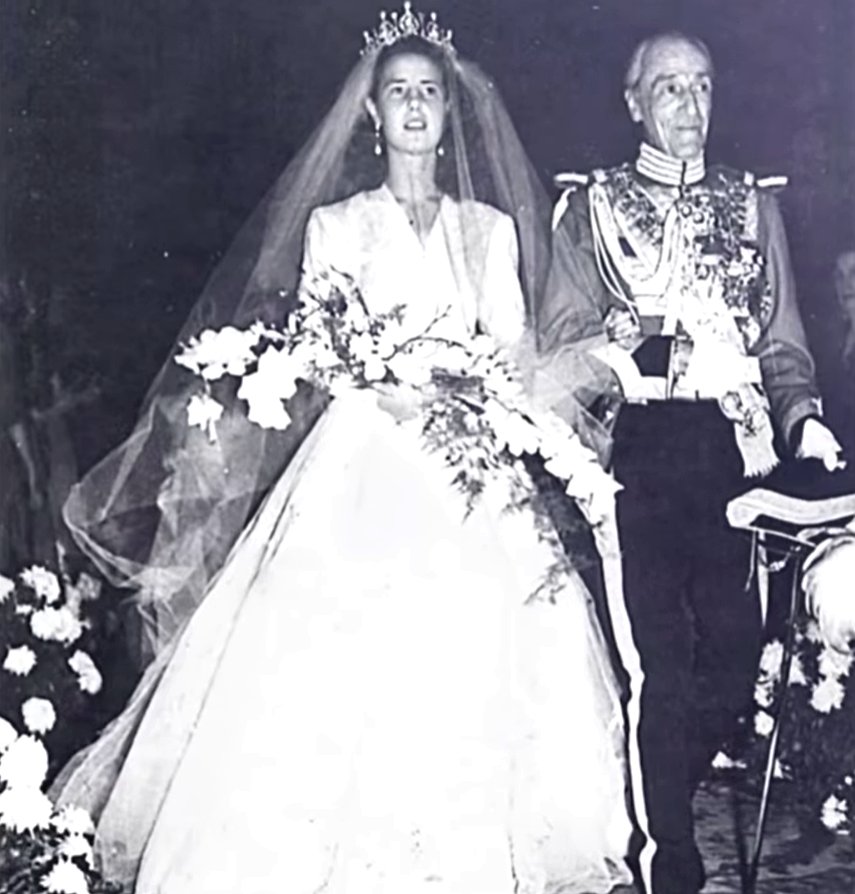
After the early death of her mother, Cayetana accompanied her father throughout his social world, joining him on polo fields, on ski slopes, and at diplomatic functions in London, Madrid, and Seville. After the war, Cayetana began spending more and more time in Spain. There, in January 1947, it was announced that Cayetana was engaged to marry Luis Martinez de Irujo y Artazcoz, the younger son of the Duke of Sotomayor. Like the Duke of Alba, Luis’s parents were deeply enmeshed with the exiled Spanish monarchy. His father was the head of the household of the Count of Barcelona, the son and heir of the late King Alfonso XIII (and grandfather of the present Spanish king, Felipe VI), and his mother was one of Queen Ena’s ladies-in-waiting.
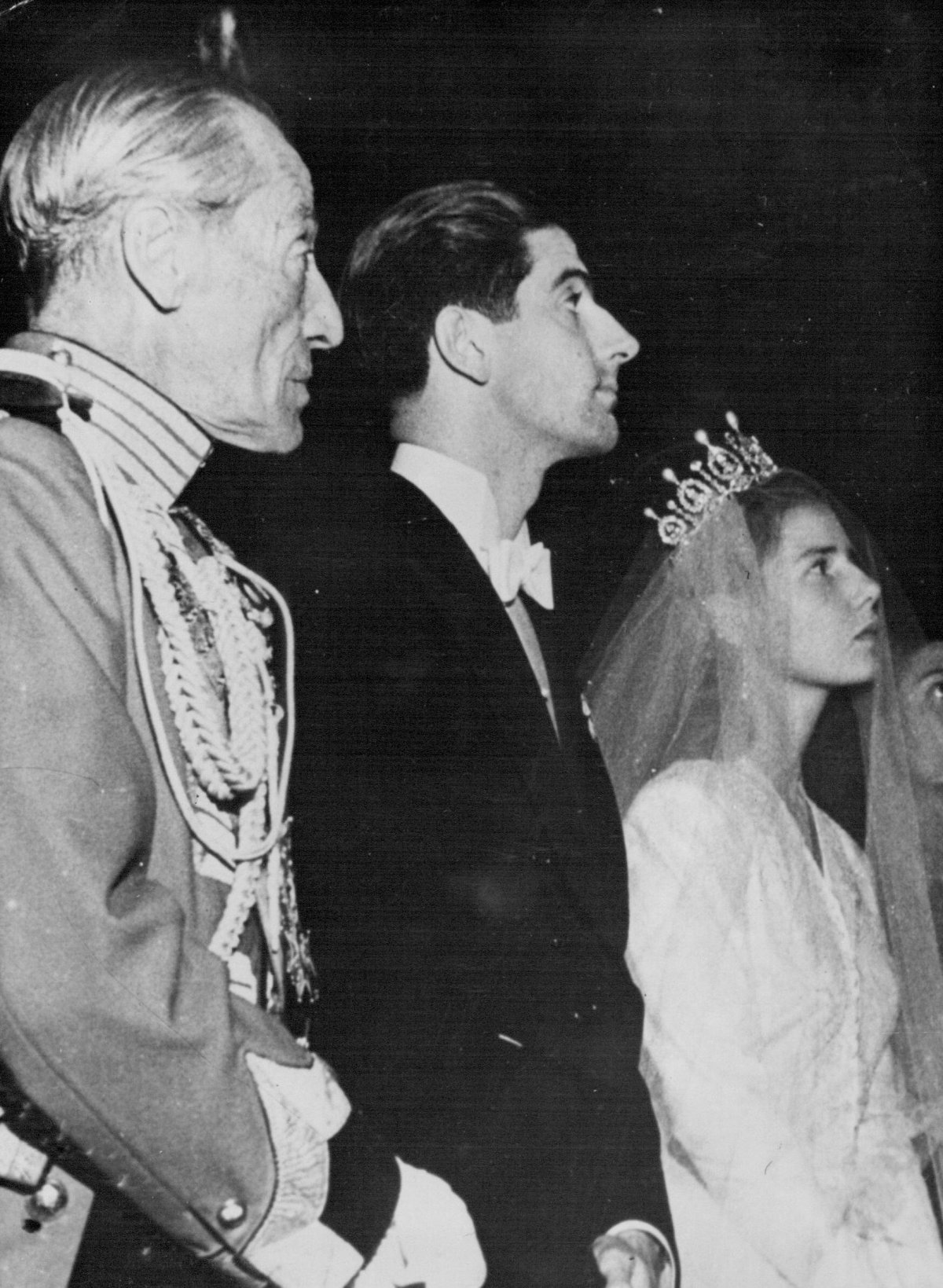
The wedding date was scheduled for October 12, 1947, and the Duke of Alba reportedly pulled out all the stops to give his only child the grandest post-war nuptials possible. The proximity to another important wedding—the marriage of Princess Elizabeth and the Duke of Edinburgh in London in November 1947—led to inevitable comparisons in the press. One press service reported, “Gossip from Madrid said the wedding will cost the Duke [of Alba] $500,000,” with the cost of the wedding gown alone rumored to be in the neighborhood of $50,000. (Remember that this is 1947 money we’re talking about.) The post-war wedding being planned for the future monarch in Britain couldn’t compare. “A Buckingham Palace source laughed somewhat ruefully,” the same outlet reported, “when told the price of the Duchess of Montoro’s gown.”
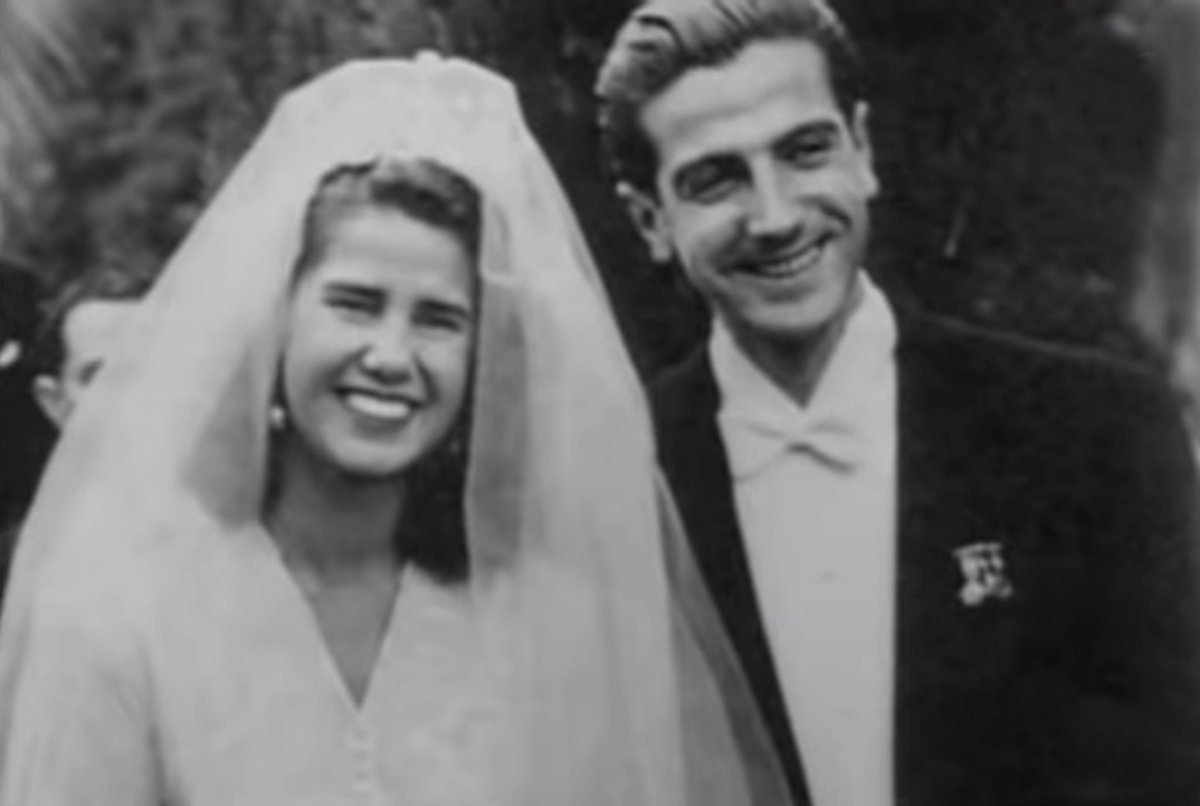
Cayetana, 21, and Luis, 27, were wed on October 12, 1947, in a ceremony scheduled to coincide with the annual Dia de la Hispanidad festivities (now Spain’s National Day). The marriage took place at Seville’s 16th-century cathedral, with representatives in attendance from Spain’s various monarchist factions and from Franco’s government. Two thousand invitations were reportedly dispatched to guests, and many of the Duke of Alba’s British friends—notably Sir John and Lady Anderson (later Viscount and Viscountess Waverly) and the Duchess of Northumberland—made the journey to Seville for the celebration. The exiled Count and Countess of Barcelona were represented by the Duchess of Almodovar del Rio.
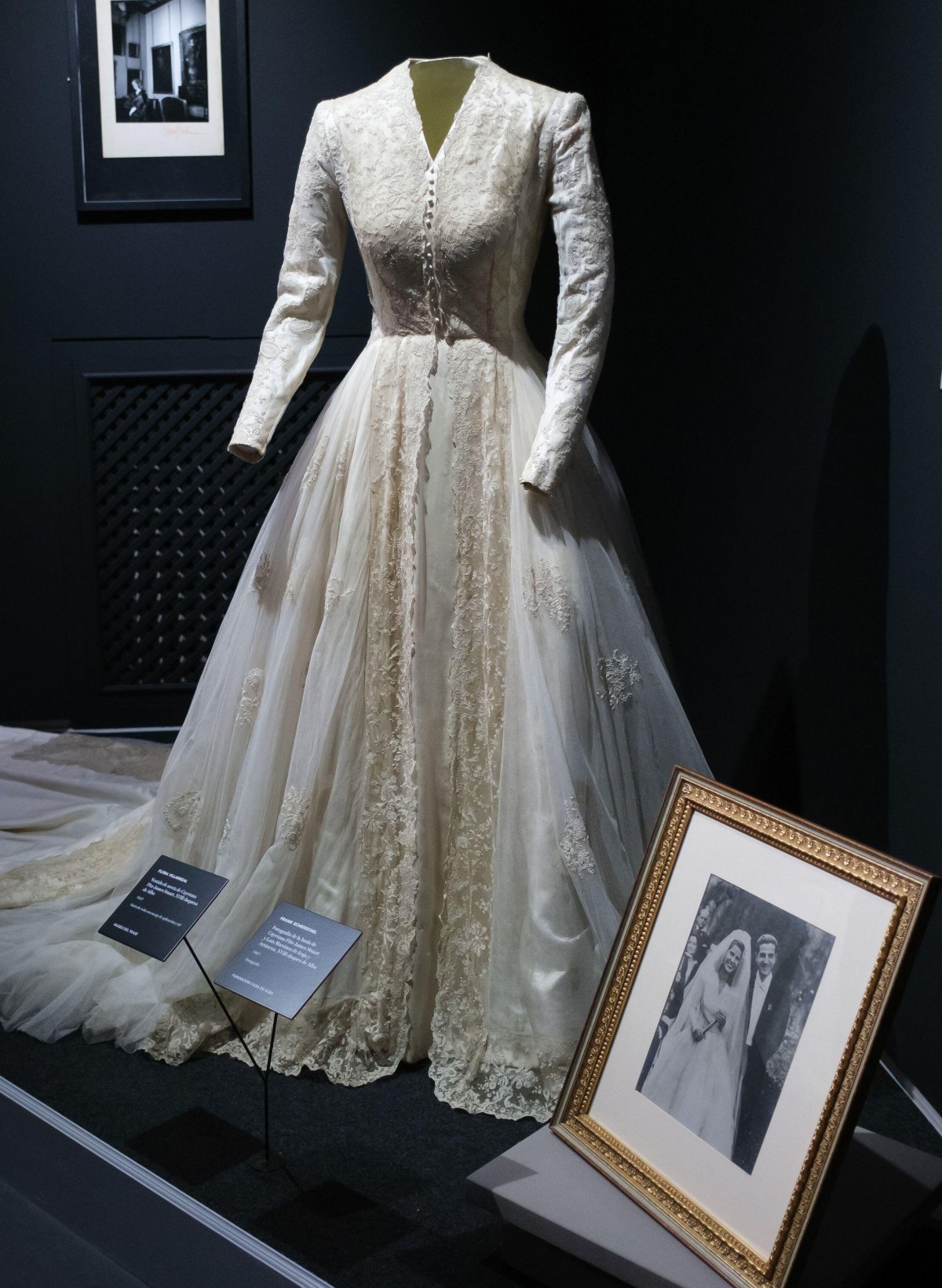
Members of the press both in Spain and Britain raved about the gown that Flora Villareal had made for Cayetana. The Sphere fawned over the gown’s fifteen-foot-long train and noted that the dress was inspired by “the wedding dress of Empress Eugenie, Consort of Napoleon III.” Why, you ask? Because Cayetana was a great-granddaughter of Empress Eugenie’s beloved sister, Maria Francisca, and the Dukes of Alba have cherished their link to their royal aunt.
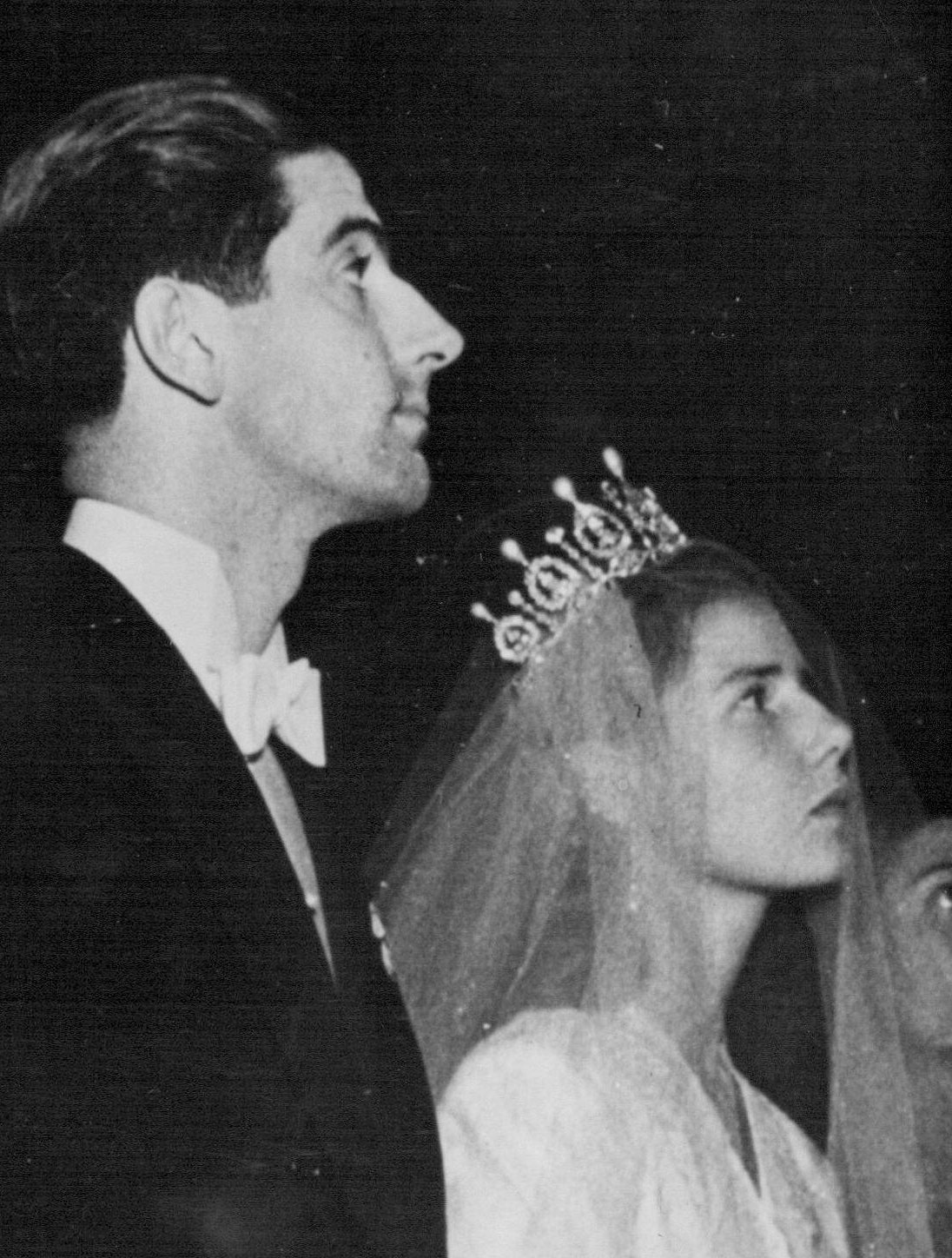
The Duchess, the press noted, was “completely self-possessed” as she approached the altar in her gown, veil, and “headdress sparkling with diamonds.” The headdress in question was a glittering tiara set with diamonds and pearls. The wedding dress may have been inspired by Empress Eugenie, but the tiara came directly from her. Eugenie bequeathed the tiara to her sister, and it has been with the Fitz-James Stuarts ever since.
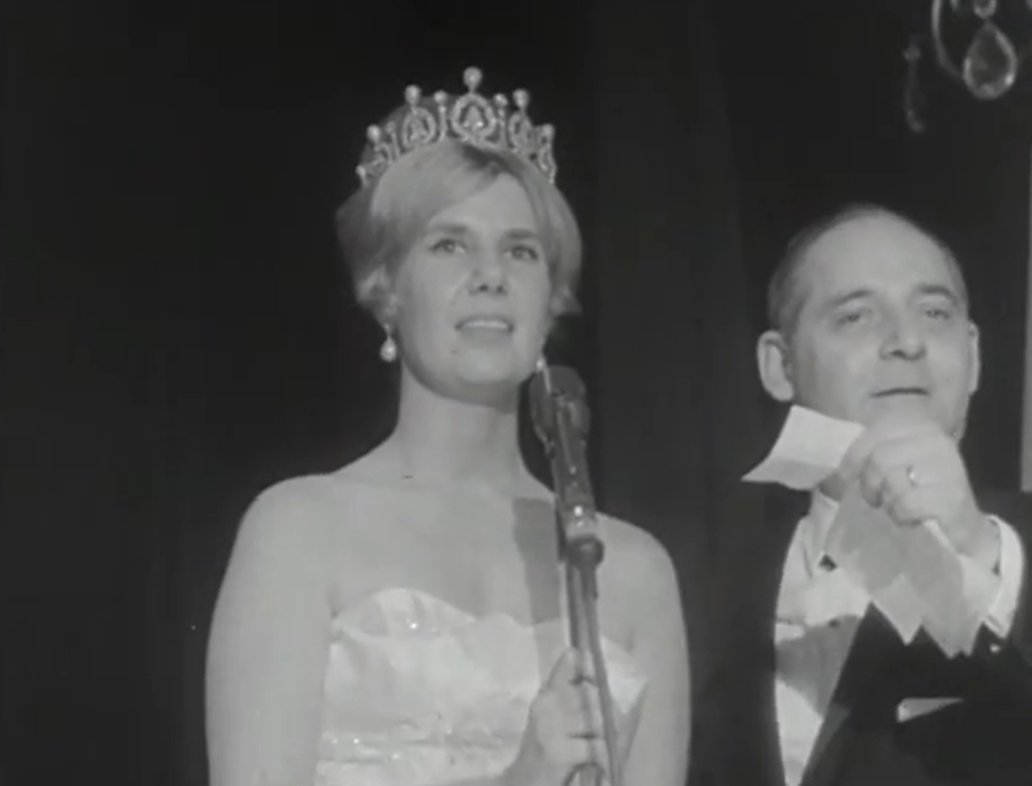
Cayetana’s wedding veil makes the tiara a little difficult to see in some of the images from the wedding, so here’s another look at her wearing the tiara a decade later, at a charity ball in New York in 1959. She attended the event with Luis, with whom she shared an enduring marriage and six children. They remained married until his death in 1972. Cayetana went on to marry twice more before her own passing in 2014. The present Duke of Alba is Luis and Cayetana’s eldest son, Carlos.
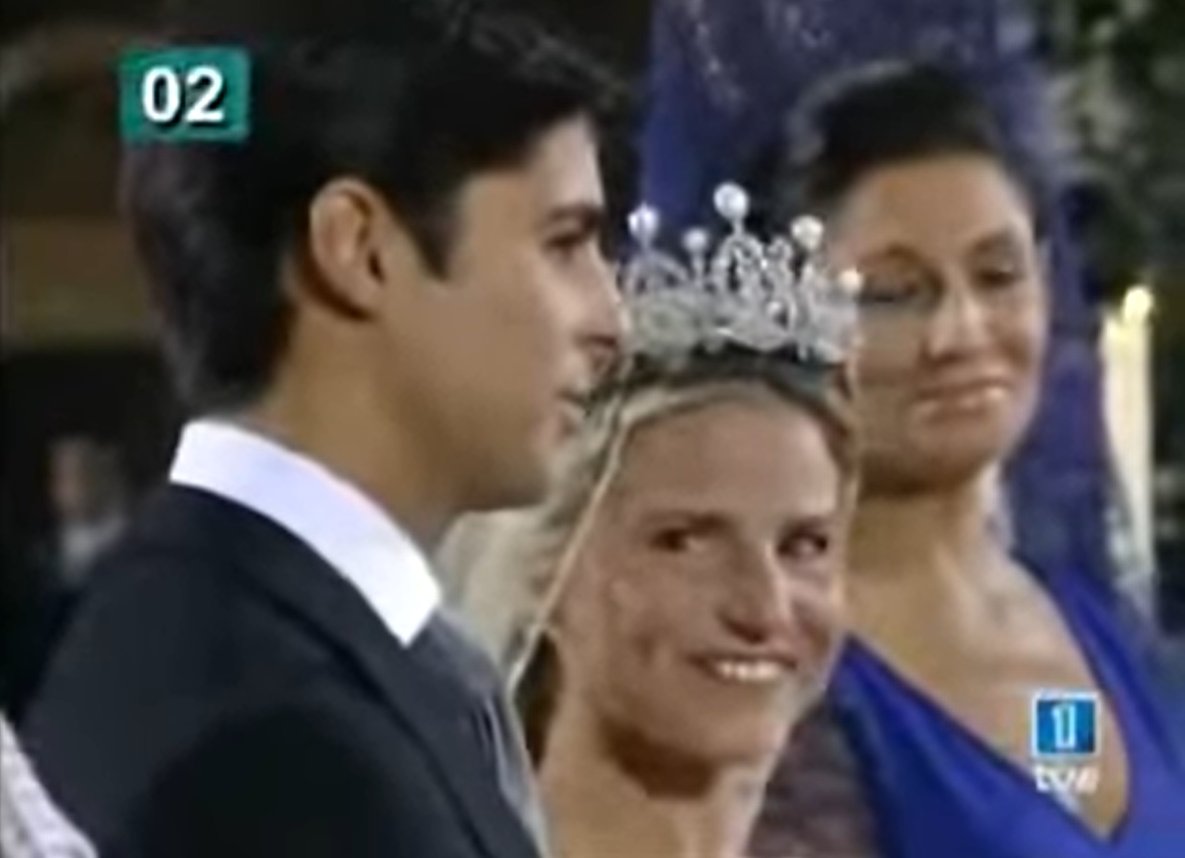
Empress Eugenie’s diamond and pearl tiara remains with the family today. In 1998, it was worn by another Alba bride: Eugenia Martínez de Irujo, Luis and Cayetana’s only daughter. The marriage wasn’t an enduring one, but her bridal ensemble, made by the designer Emanuel Ungaro, has had lasting appeal. That dress is also on display in the new fashion exhibition at the Palacio de Liria, which runs from now until March.
Leave a Reply
You must be logged in to post a comment.